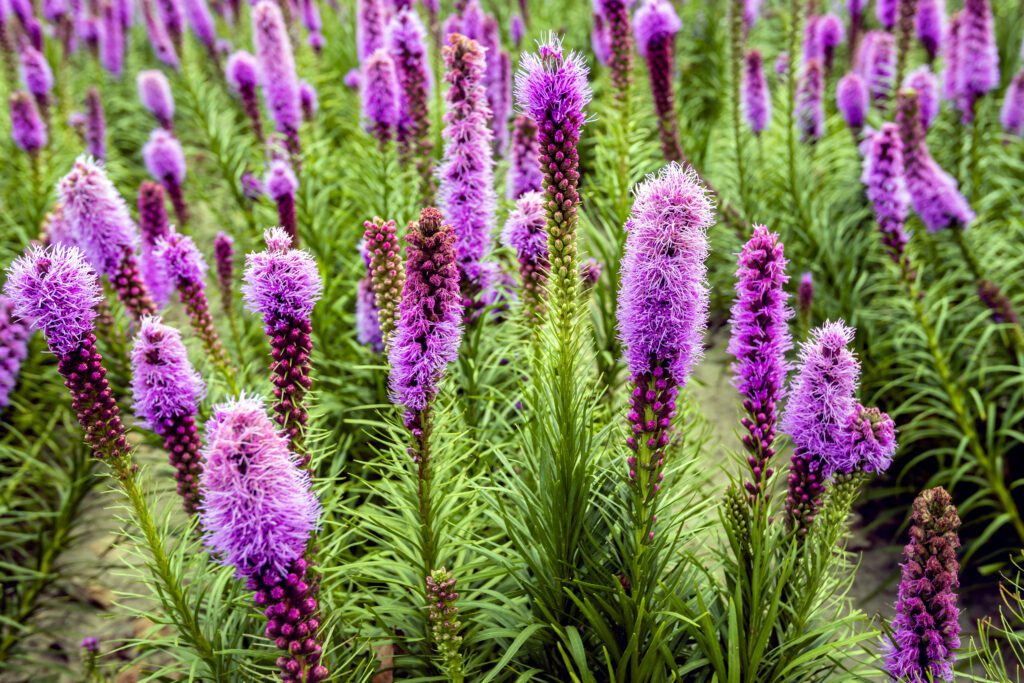
Liatris spicata is a wonderful plant native to Western North Carolina. With showy flower spikes that come back year after year, these lovely plants attract pollinators and beneficial insects to your garden.
Liatris spicata is a showstopper in the garden. With vibrant pink-purple flower spikes (sometimes also available in white), with a finely textured grassy foliage, they combine beautifully with many other plants. Clump-forming perennials in the Aster family, they are well behaved and low maintenance. They can reach 2-4’ T x .75 x 1.5’ W. We have some planted in our Pollinator Garden and enjoy the blooms every year.
These sun-lovers are tolerant of heat and humidity, and prefer moist well-draining soils. They do not handle wet winter soils well, so be sure to amend soils well when planting in heavy clay.
They attract butterflies, bees, hummingbirds, and a variety of beneficial insects to the garden. Goldfinches enjoy eating their seeds. Some of their seeds may slowly disperse in your garden, potentially bringing new plants every year, but not in a particularly aggressive or troublesome way. With their shallow root systems, they are easy to transplant to other areas of the garden.
The Xerxes Society recommends Liatris spicata as an excellent source of nectar for monarch butterflies.
‘Kobold’ is a cultivar which is relatively smaller and more compact than the straight species, growing to around 2-2.5’ T.
There are many species of Liatris available, aside from just Liatris spicata. We are also sometimes able to source Liatris microcephala, which is also native to Western North Carolina and blooms in late summer to fall. More understated than L. spicata, they reach 2’ T. They have tiny fluffy and puffy lavender flowers and are very drought and heat tolerant.
Liatris is widely adaptable. They are good fresh and dried cut flowers, and work well in a variety of garden designs. Grow them massed for dramatic effect, or use in pollinator gardens, rain gardens, perennial borders, native plant gardens, and cottage gardens. Mix them in with native grasses for a beautiful and relaxing effect that moves in the wind.
